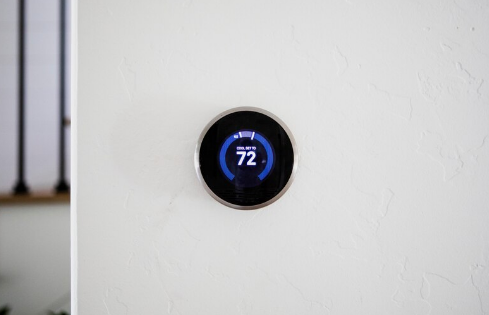As South Carolina swelters through this most recent stretch of 95-100 degree Fahrenheit weather, many are grappling with the age-old question: what’s the best temperature to set the thermostat? Finding the sweet spot between comfort, energy efficiency, and preventing system overload is key during the peak of summer.
While personal comfort plays a significant role, energy experts and HVAC professionals generally recommend setting your thermostat to 78 degrees when you are home during extreme heat. This temperature provides a comfortable indoor environment without forcing your air conditioning unit to work excessively hard, which can lead to higher energy bills and increased wear and tear on the system.
During periods of extreme outdoor temperatures (95-100+ degrees), your air conditioner is already under immense strain to cool your home. Setting the thermostat significantly lower, such as in the low 70s or 60s, can lead to several issues:
- Higher Energy Bills: The greater the difference between indoor and outdoor temperatures, the more energy your AC unit consumes. Every degree lower than 78 can significantly increase your electricity usage.
- System Overload and Burnout: Running the unit continuously at full capacity in extreme heat can lead to the system freezing up or, worse, breaking down. This is especially true for older or undersized units.
- Humidity Issues: While your AC cools, it also dehumidifies. However, an overworked unit might struggle to effectively remove humidity, leaving your home feeling clammy even if the temperature is low.
When You’re Away:
If you’re leaving your home for several hours, consider raising the thermostat a few degrees higher, perhaps to 80-82 degrees Fahrenheit. Avoid turning the unit completely off, as allowing your home to get too hot means the AC will have to work even harder to cool it down when you return, potentially negating any energy savings and increasing strain.
Other Tips for Summer Cooling:
- Regular Maintenance: Ensure your HVAC system has had its annual tune-up. Clean filters regularly.
- Seal Leaks: Seal any drafts around windows and doors to prevent cool air from escaping.
- Use Fans: Ceiling fans can make a room feel several degrees cooler without significantly impacting your energy bill. Remember to turn them off when you leave the room, as they cool people, not spaces.
- Block Sunlight: Keep blinds, shades, or curtains closed during the hottest parts of the day to prevent solar heat gain.
- Avoid Heat-Generating Activities: Limit the use of ovens, dryers, and other heat-producing appliances during peak heat hours.
By finding the optimal thermostat setting and implementing these energy-saving tips, you can stay cool, comfortable, and keep your energy bills in check throughout the blistering summer months.
Sign up for our Sunday Spectator. Delivered to your inbox every Sunday, with all the news from the week.
















